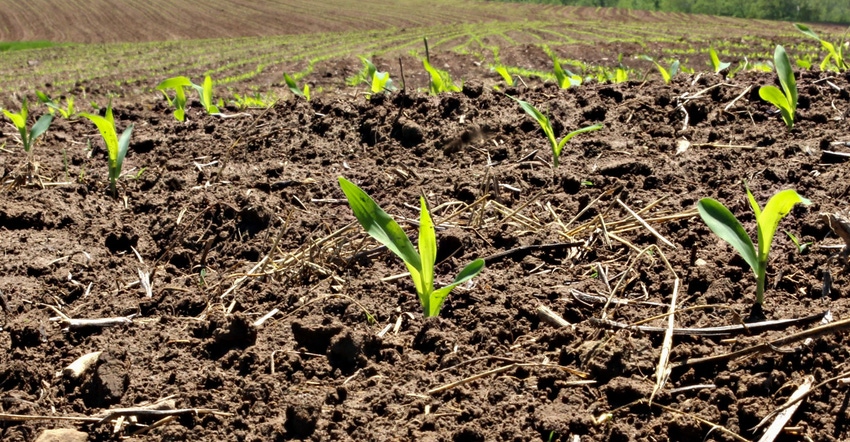November 3, 2020

Farmers from Missouri are interested in how sulfur and potassium respond in corn and soybeans, and they want others to participate in fertilizer trials as part of the University of Missouri Extension Strip Trial Program.
MU Extension nutrient management specialist John Lory, who leads the program, say this year’s trials approved by a farmer panel focused on improving management of fertilizer in corn and soybean rotations, wheat, and forages.
The strip trial program uses on-farm research to help farmers improve profits and maintain the environment. A local Extension person helps the farmer lay out a trial using the farmer’s equipment, and then provides guidance throughout the trial. After harvest, the farmers provide yield maps for analysis to determine fertilizer effects on yield.
Trial options
Here are the 2021 trial options farmers may want to consider:
Sulfur response in corn-soybean rotation. Lory seeks farmers to compare the sulfur fertilizer rate with a no-sulfur control strip. The preferred source is a fertilizer-grade gypsum (calcium sulfate). The farmer decides when to apply the fertilizer.
Potassium response in corn-soybean rotation. This trial compares the potassium fertilizer rate with a no-potassium control. Preferred source is potassium chloride. The farmer chooses when to apply up to two rates.
Phosphorus response in corn. The strip trial program compares phosphorus fertilizer with a no-P control. The preferred source is MAP or DAP, and the farmer controls timing. “This trial is more complicated because we must adjust for nitrogen in P fertilizer,” Lory says.
Nitrogen response in corn. This tests the farmer’s nitrogen rate against more or less nitrogen (typically 30 pounds). Strips may be either preplant or sidedress applications. The farmer chooses the timing, N source and placement.
Nitrogen timing in corn or wheat. This more complicated trial tests the effect of delaying all or some of the nitrogen application. Farmers will test a single early application versus a split application, or a split application versus a late application, Lory says.
Nitrogen response in forages. This tests the farmer’s nitrogen rate against more or less nitrogen (typically 30 pounds). The farmer chooses the timing, N source and placement. These trials require specialized equipment to monitor pasture growth rates.
How it works
Lory says the strip trial program can only work with farmers who can provide yield maps for grain harvest, and an as-applied map for fertilizer is preferred. All trials must be replicated at least four times on eight to 12 strips.
The farmer controls all other management choices for the crop, including crop varieties, other fertilizer, plant protection choices and harvest.
Drones will survey fields during the growing season, and there will be targeted fall soil sampling if sulfur, potassium and phosphorus increase yield. Every fall, the program sends the farmers results from their farms and from other trial participants.
Strip trials involve field-length strips laid out side by side. The simplest trials have side-by-side strips with and without fertilizer. The on-farm trials compare management practices that are replicated at least four times. MU Extension specialists provide individual consultations to compare treatments on the farmer’s land.
Fertilizer trials are only one option supported by the MU Certified Strip Trial Program. There are also trials evaluating management of cover crops, fungicide response in soybeans and seed treatments in soybean.
If interested, contact your local MU Extension agronomist or email [email protected]. For more information, visit striptrial.missouri.edu.
Source: The University of Missouri Extension, which is solely responsible for the information provided and is wholly owned by the source. Informa Business Media and all its subsidiaries are not responsible for any of the content contained in this information asset.
You May Also Like




